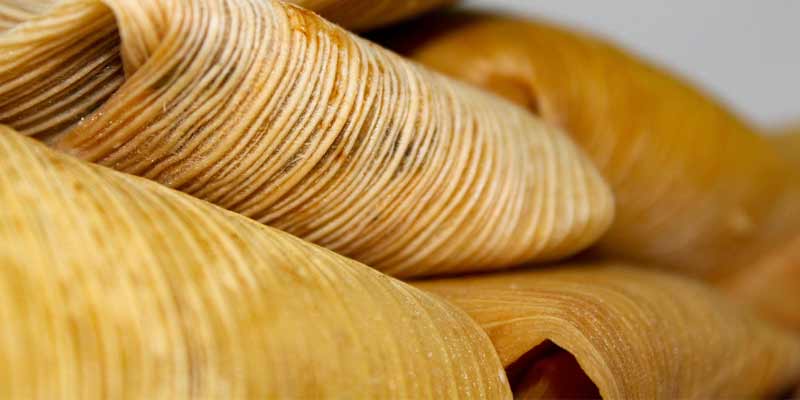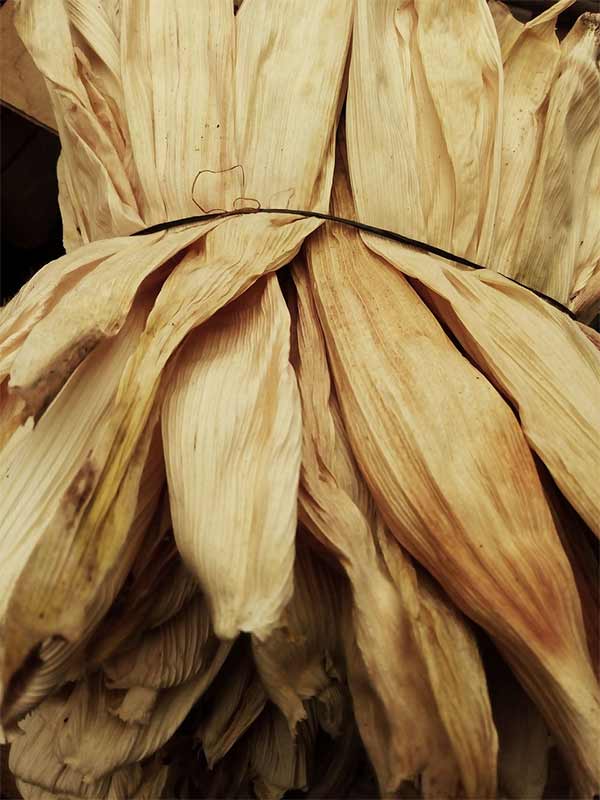The tamale, a traditional Mesoamerican dish, embodies not only culinary excellence but also serves as an integral cultural symbol tracing its roots deep into Mexico and Central America’s history. We wrap this delicacy in corn husks within their protective embrace lies a delectable amalgamation of masa dough infused with diverse fillings that create bursts of flavor upon each bite.
Whether it’s during festive occasions or routine meals alike; tamales always mark special moments on our tables across these regions. A common query, however – particularly from newcomers to this unique gastronomic tradition – often surfaces: Is the consumption of tamale husk permissible?
Various factors such as cultural practices, personal preferences, and the method of preparation determine a multifaceted answer to this query. We shall now embark on an exploration into the intricate nature of tamale husks: are they indeed edible; how do they contribute to our overall tamale experience?
Understanding Tamale Husks
Delving into the edibility of tamale husks requires an initial understanding of their role in the tamale-making process. Corn husks, serving as natural wrappers, create a protective cocoon for both savory filling and masa dough during cooking. Not only are these pliable husks instrumental in preserving tamales’ integrity; but they also infuse them with subtle corn flavor and enticing aroma, an integral part of achieving perfection through steaming.
Carefully selecting corn husks, we clean them and soak them in water to soften before assembling the tamales. We spread the softened husks with masa dough, fill them with a variety of ingredients like meats, cheeses vegetables, and sauces; then fold each one up before securing it into an individual parcel.
Can You Eat Tamale Husk?
Enthusiasts and newcomers alike debate whether one can eat tamale husks, a question that sparks intrigue. In truth, while corn husks are not usually consumed with the tamale – they present no danger; indeed, they are entirely safe to ingest. The fibrous texture and flavorlessness of these husks, however – compared to the delectable filling and masa dough enclosed within – render them less desirable for consumption.
In traditional tamale-eating etiquette, one unwraps the corn husks from a tamale before relishing its contents. This allows for an uninterrupted indulgence in–and appreciation of—a flavorful blend; it features masa and filling free from fibrous-husk distraction.
Nevertheless—despite such adherence to protocol—some may inadvertently consume small husk fragments during their devouring of tamales, they are generally perceived as innocuous, and frequently deemed an inescapable facet of the dining experience.
Culinary Perspectives on Tamale Husks
The dish may not prioritize tamale husks, yet they bear significance in culinary traditions and techniques. Beyond their role as tamales’ wrappers, corn husks enhance the dish’s visual appeal with a rustic charm; this charm embodies homemade tamales meticulously made with care–a mark of craftsmanship we all associate positively with.
The cooking process significantly relies on tamale husks, as they aid in moisture retention and impart subtle corn flavors to the tamales during their perfect steaming. The masa dough, while cocooned within the husks, undergoes a transformative phase, it assimilates the essence of corn – an action that amplifies both the taste and texture of these delectable Mexican treats.
Culinarily, we value tamale husks for their practicality and aesthetic appeal rather than edibility. Although typically not consumed as part of the tamale, these husks enrich the sensory experience tied to this beloved dish through their presence.
Exploring Alternative Uses for Tamale Husks
Primarily serving as wrappers for tamales, tamale husks harbor potential in the culinary sphere beyond their traditional role; indeed, they captivate chefs and home cooks alike. These corn husks—through recent exploration—are being creatively incorporated into diverse recipes, an innovative twist that leverages their unique qualities to enhance dishes.
Tamale husks offer an alternative use as a natural wrapper for grilling or steaming various foods – including fish, vegetables, and tamales. The application of these husks not only imparts subtle smokiness and moisture to the ingredients but also infuses them with a hint of corn flavor; simultaneously, it prevents sticking on the cooking surface.
Moreover, in the culinary realm, one can repurpose corn husks as environmentally friendly alternatives to parchment paper or aluminum foil during baking and roasting processes. The natural fibers of these husks form a protective barrier that not only seals moisture and flavor within but also delivers tender succulence for dishes; all this comes with the added bonus of requiring minimal cleanup.
Conclusion
Conclusively, the nuanced question of whether tamale husks are edible reflects a rich tapestry, culinary traditions, and cultural practices associated with this beloved dish. While tamale husks indeed serve as safe-to-eat natural wrappers enhancing both the cooking process and visual presentation, they do not get consumed typically within the tamale itself.
Unraveling the enigma of tamale husks instills within us a profound appreciation for the embedded artistry and craftsmanship in this culinary tradition. Tamales, consumed during festive celebrations or everyday meals, transcend mere sustenance; they invite us to relish their flavors, textures, and evoke memories with each tantalizing bite. Therefore, as you next indulge in a steaming hot tamale—do not forget to peel back its husk; revel anew–inexorably drawn towards–the timeless allure of this cherished culinary treasure.

Kate has been in the food business for over 20 years. Worked as a cook at several buffets which include Old Country Buffet, Five Star Buffet, and Ichiban Buffet. Now, I’m mostly at home cooking for my family, caring for chickens and ducks, and tending the garden.


